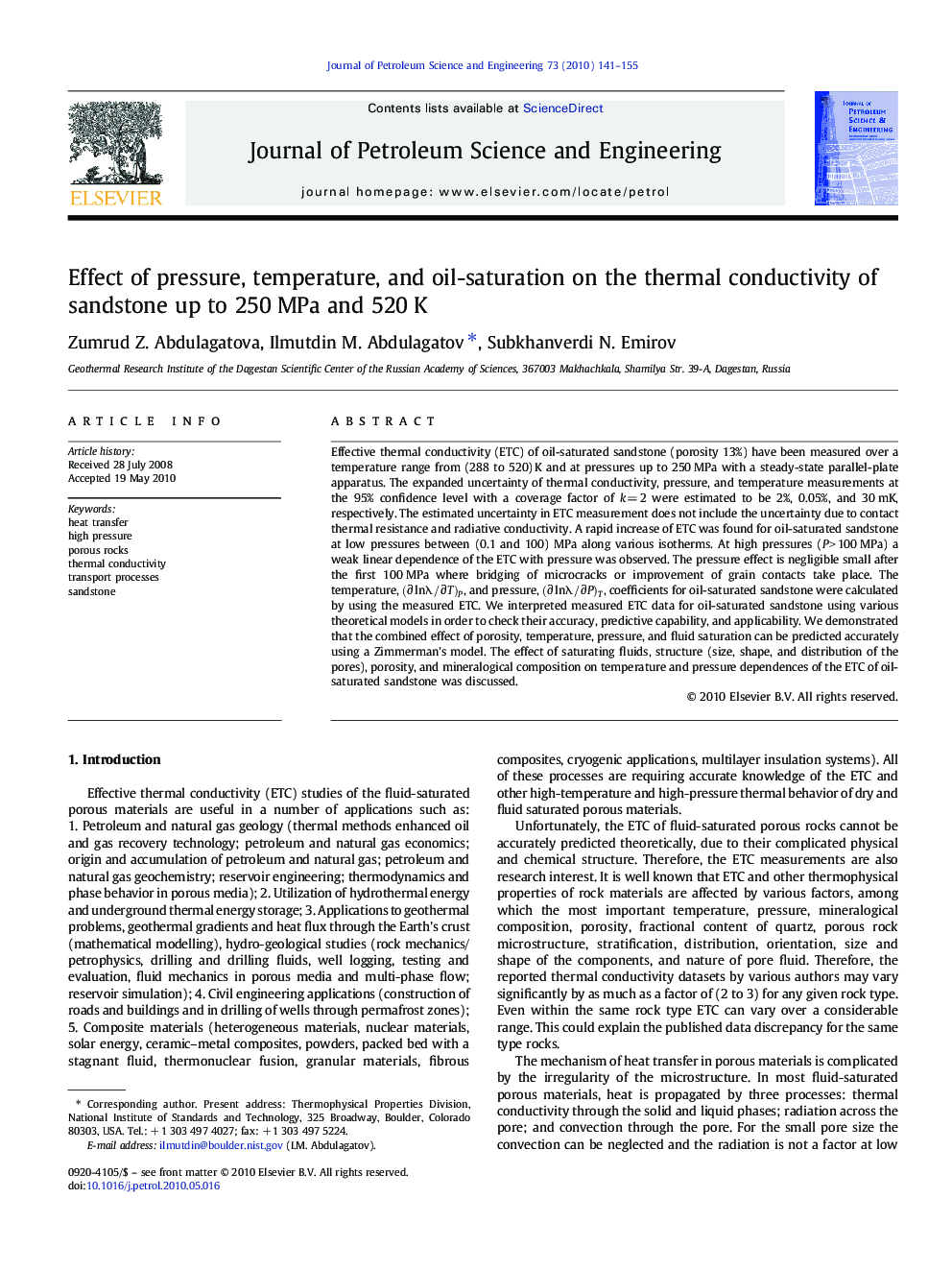| Article ID | Journal | Published Year | Pages | File Type |
|---|---|---|---|---|
| 1755913 | Journal of Petroleum Science and Engineering | 2010 | 15 Pages |
Effective thermal conductivity (ETC) of oil-saturated sandstone (porosity 13%) have been measured over a temperature range from (288 to 520) K and at pressures up to 250 MPa with a steady-state parallel-plate apparatus. The expanded uncertainty of thermal conductivity, pressure, and temperature measurements at the 95% confidence level with a coverage factor of k = 2 were estimated to be 2%, 0.05%, and 30 mK, respectively. The estimated uncertainty in ETC measurement does not include the uncertainty due to contact thermal resistance and radiative conductivity. A rapid increase of ETC was found for oil-saturated sandstone at low pressures between (0.1 and 100) MPa along various isotherms. At high pressures (P > 100 MPa) a weak linear dependence of the ETC with pressure was observed. The pressure effect is negligible small after the first 100 MPa where bridging of microcracks or improvement of grain contacts take place. The temperature, (∂lnλ/∂T)P∂lnλ/∂TP, and pressure, (∂lnλ/∂P)T∂lnλ/∂PT, coefficients for oil-saturated sandstone were calculated by using the measured ETC. We interpreted measured ETC data for oil-saturated sandstone using various theoretical models in order to check their accuracy, predictive capability, and applicability. We demonstrated that the combined effect of porosity, temperature, pressure, and fluid saturation can be predicted accurately using a Zimmerman's model. The effect of saturating fluids, structure (size, shape, and distribution of the pores), porosity, and mineralogical composition on temperature and pressure dependences of the ETC of oil-saturated sandstone was discussed.
